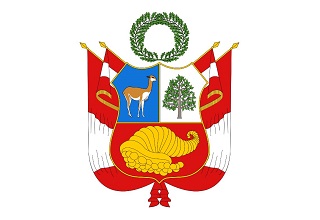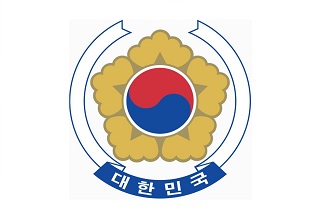Regarding the Inspection and Quarantine Requirements for Chili from Tanzania to China
According to the regulations of the Chinese Customs and the Tanzanian Ministry of Agriculture on the plant quarantine requirements for Chili, that meet the requirements are allowed to be imported from now on.
I. Inspection and quarantine basis
(I) "Biosafety Law of the People's Republic of China";
(II) "Law of the People's Republic of China on Entry and Exit Animal and Plant Quarantine" and its implementing regulations;
(III) "Food Safety Law of the People's Republic of China" and its implementing regulations;
(IV) "Protocol on Plant Quarantine Requirements for Tanzanian Chili Exported to China between the General Administration of Customs of the People's Republic of China and the Ministry of Agriculture of the United Republic of Tanzania".
II. Names of commodities allowed to enter the country
The Chili in this announcement refer to edible chili fruits (Capsium spp.) grown and processed in Tanzania.
III. Enterprise registration
The planting bases and packaging plants for Chili exported to China shall be reviewed by the Tanzanian Ministry of Agriculture and approved for registration by the Chinese Customs. The registration information includes the name, address and registration number, so as to accurately trace the source when the exported goods do not comply with the relevant provisions of this announcement. Before the start of trade, the Tanzanian Ministry of Agriculture shall provide the registration list to the Chinese Customs, which shall be published on the customs website after review and approval.
IV. List of quarantine pests of concern to the Chinese Customs
1. Bactrocera cucurbitae
2. Ceratitis capitata
3. Ceratitis rosa
4. Dacus ciliatus
5. Bactrocera latifrons
6. Spodoptera littoralis
7. Liriomyza trifolii
8. Tomato spotted wilt virus (TSWV)
9. Callosobruchus maculatus
10. Acanthoscelides obtectus
11. Potato virus A (PVA)
12. Clavibacter michiganensis subsp. Michiganensis
13. Pseudomonas corrugata
14. Pseudomonas syringae pv. syringae
15. Verticillium dahliae
V. Pre-export management
(I) Planting base management.
1. The planting base should establish a sound quality management system and traceability management system under the supervision of the Tanzanian Ministry of Agriculture, implement good agricultural practices (GAP), maintain hygienic conditions for planting, such as no pollution sources that affect chili production, timely cleaning of plant diseased residues, etc., and implement integrated pest management (IPM), including pest monitoring, physical, chemical or biological control, and other prevention and control measures such as agricultural operations.
2. The planting base should carry out pest monitoring and integrated management for quarantine pests of concern to the Chinese Customs under the supervision of the Tanzanian Ministry of Agriculture. Pest monitoring and control should be carried out under the guidance of professional technicians. Technicians should receive training from the Tanzanian Ministry of Agriculture or its authorized agencies.
3. The planting base should keep pest monitoring and control records for at least two years and provide them to the Chinese Customs upon request. Pest monitoring and control records should at least include detailed information such as the monitoring time, the name of the pest found, the control measures taken, and the date of use, active ingredients and concentration of the chemicals used.
4. For bactrocera such as Dacus ciliatus, Ceratitis rosa, Ceratitis capitata, Bactrocera cucurbitae, and Bactrocera latifrons, the planting base should conduct visual and trapping monitoring during the chili growing season, using methods such as hanging bactrocera pheromone traps and yellow sticky insect boards. Once bactrocera is detected, effective prevention and control is required.
5. For other pests of concern to the Chinese Customs, such as Spodoptera littoralis, the planting base should be monitored during the growing season, once a week, focusing on branches, stems, leaves, and fruits. If pests or their corresponding symptoms are found during monitoring, prevention and control measures including chemical or biological control should be taken in a timely manner to control the occurrence of pests or maintain a low level of pest prevalence.
6. The Tanzanian Ministry of Agriculture should ensure that laboratories can obtain the corresponding quarantine and safety and health project testing and identification qualifications, and undertake relevant plant quarantine and safety and health inspection and monitoring work.
(II) Packaging plant management.
1. The processing, packaging, storage and shipment of Chili exported to China should be carried out under the quarantine supervision of the Tanzanian Ministry of Agriculture or its authorized officials.
2. The packaging factory for Chili exported to China should be clean and hygienic, with hardened ground and raw material field and finished product warehouse.
3. The storage, processing, packaging and storage functional areas of Chili exported to China are relatively independent and reasonably laid out, and isolation measures are taken from the living area and there is an appropriate distance.
4. During the processing of Chili exported to China, they should be manually picked, screened, brushed or washed with high-pressure water guns to ensure that there are no insects, mites, snails, diseased fruits, rotten fruits, grass seeds, stems and leaves and other plant residues and soil.
5. Registered packaging factories should establish a traceability system to ensure that Chili exported to China can be traced back to registered planting bases, and record information such as processing and packaging date, name of the source planting base, quantity, export date, export quantity, import country, transportation tool or container number.
(III) Packaging requirements.
1. The packaging materials should be clean and hygienic, unused, and meet the relevant plant quarantine requirements of China. If wooden packaging is used, it should comply with the requirements of International Standard for Phytosanitary Measures No. 15 (ISPM 15).
2. Each package box should be marked in Chinese or English with the product name, country, place of origin (district, city or county), name or registration number of the planting base, name or registration number of the processing and packaging factory, etc. Each pallet should be marked with "输往中华人民共和国" or "Exported to the People's Republic of China" in Chinese or English. If pallets are not used (such as air cargo), each package box should be marked in the same way.
3. The means of transport or containers loaded with Chili exported to China must be checked for good sanitary conditions during shipment. The means of transport or containers should be sealed and the seals should be intact when arriving at the Chinese entry port.
(IV) Pre-export inspection and quarantine.
1. Before export, the Tanzanian Ministry of Agriculture should sample and inspect 2% of the Chili exported to China at a rate of 2% per batch. If there are no plant quarantine issues within one year, the sampling rate will be reduced to 1%.
2. If quarantine pests, branches, leaves or soil of concern to the Chinese Customs are found, the entire batch of goods shall not be exported to China. The Tanzanian Ministry of Agriculture shall find out the reasons and take corrective measures. At the same time, the seizure records shall be kept and provided to the Chinese Customs upon request.
(V) Quarantine treatment requirements.
Fresh Chili exported to China must be quarantined under the supervision of the Tanzanian Ministry of Agriculture. The Tanzanian Ministry of Agriculture shall first fumigate the goods and then cold treat them. The treatment indicators are as follows:
1. Fumigation treatment indicators: When the core temperature of the fruit is not less than 22°C, use 32 g/m^3 concentration of methyl bromide for 2 hours (the concentration before the end of fumigation shall not be less than 18 g/m^3), or use 18 g/m^3 concentration of methyl bromide for 5 hours (the concentration before the end of fumigation shall not be less than 13 g/m^3).
2. Cold treatment indicators: 4 days at a core temperature of 0.56-2.77°C, or 11 days at a core temperature of 3.33-8.33°C.
3. If cold treatment is used during transportation, the Tanzanian Ministry of Agriculture should monitor the core temperature of the refrigerated transport vehicle before the product is exported and confirm that it meets the requirements. The core temperature of the fruit during transportation should meet the above cold treatment index requirements, and the temperature records during transportation should be kept.
(VI) Requirements for plant quarantine certificates.
1. If the quarantine is qualified, the Tanzanian Ministry of Agriculture should issue a plant quarantine certificate in accordance with the International Standard for Phytosanitary Measures No. 12 (ISPM 12), indicating the name or registration number of the planting base and packaging plant, as well as the quarantine treatment conditions used for the batch of goods, and fill in the following additional statement: "This consignment complies with the requirements specified in the Protocol of Phytosanitary Requirements for Export of Chilies from Tanzania to China, and is free from quarantine pests of concern to China."
2. Before the start of trade, the Tanzanian Ministry of Agriculture should provide a sample of the plant quarantine certificate to the Chinese Customs for confirmation and filing.
VI. Entry inspection and quarantine and unqualified treatment
When the Chili exported to China arrive at the Chinese entry port, the Chinese Customs will implement inspection and quarantine in accordance with the following requirements.
(I) Verification of relevant certificates and labels.
1. Verify whether the plant quarantine certificate complies with the provisions of Article 5, Item (VI) of this Announcement.
2. Verify whether the labels on the packaging boxes and pallets comply with the provisions of Article 5, Item (III) of this Announcement.
(II) Entry inspection and quarantine.
According to relevant laws, administrative regulations, rules, etc., imported Chili shall be subject to inspection and quarantine. If they pass the inspection and quarantine, they shall be allowed to enter the country.
(III) Disqualified treatment.
1. If it is found that the goods come from unregistered planting bases and packaging plants, the batch of goods shall not be allowed to enter the country.
2. If quarantine pests or other quarantine pests of concern to the Chinese Customs are found, or plant residues, soil, etc. are found, the batch of goods shall be returned, destroyed or quarantined and pest-free.
3. If it is found that the goods do not meet the national food safety standards of China, the batch of goods shall be returned or destroyed.
4. If the above non-compliance is found, the Chinese Customs will notify the Tanzanian Ministry of Agriculture and suspend the import of Chili from the relevant planting bases or packaging plants as appropriate. The Tanzanian Ministry of Agriculture should identify the reasons for non-compliance and take corrective measures to prevent similar situations from happening again. China Customs will decide whether to cancel the suspension measures based on the rectification results of the Tanzanian Ministry of Agriculture.
GACC
Sep. 20, 2024




